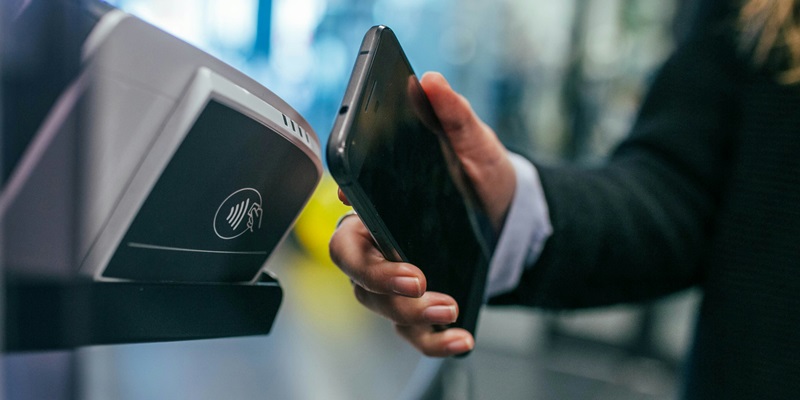In today’s digital age, the convenience and flexibility of mobile payment solutions have revolutionized the way businesses transact with their customers. As technology continues to advance, it is crucial for businesses to adapt and embrace mobile payment options to stay competitive in the marketplace. This article will explore the various aspects of mobile payment solutions, including understanding your unique needs, popular mobile wallets, seamless integration, security measures, costs and fees, selecting a reputable service provider, the integration process, security audits, vulnerability assessments, and creating a seamless user experience.
Understanding Your Needs
Before choosing a mobile payment solution, it is essential to identify your unique requirements. Every business operates differently, and what works for one may not work for another. By understanding your needs, you can choose the most suitable mobile payment solution tailored to your specific business model and customer preferences. Factors to consider include the industry you operate in, the volume of transactions, the specific payment features you require, and the integration capabilities with your existing systems.
Mobile Wallets
One popular form of mobile payment is through mobile wallets such as Apple Pay, Google Pay, and Samsung Pay. These digital wallets allow customers to store their payment information securely on their smartphones and make contactless payments. Mobile wallets offer convenience and security, as they eliminate the need to carry physical wallets or credit cards, reducing the risk of theft or loss. By utilizing near-field communication (NFC) technology, customers can easily complete transactions by tapping their phones on compatible payment terminals.
Seamless Integration
A crucial factor to consider when selecting a mobile payment solution is its integration capabilities with your existing systems. Look for solutions that offer seamless integration with your point-of-sale system, accounting software, and e-commerce platform. This integration streamlines the payment process, eliminating the need for manual data entry and reducing the chances of errors. By connecting your mobile payment solution with your other business systems, you can gain valuable insights into customer behavior, inventory management, and financial reporting.
Security Measures
Security is paramount when it comes to mobile payments, as customers trust businesses with their sensitive payment information. It is crucial to select a mobile payment solution that implements robust security measures to protect customer data. Look for solutions that utilize encryption technology to safeguard transactions and store payment information securely. Additionally, consider solutions with features like tokenization, which replaces sensitive card data with unique tokens, further enhancing security and reducing the risk of fraud.
Costs and Fees
When exploring mobile payment solutions, carefully consider the associated costs and fees. While many mobile payment providers offer competitive pricing, it is essential to understand their fee structure. Some providers charge a percentage-based fee per transaction, while others offer fixed monthly fees. Evaluate your business’s transaction volume and average ticket size to determine which fee structure is most cost-effective for you. Additionally, consider any additional costs for hardware, software integration, or ongoing support.
Reputable Service Provider
Selecting a reputable mobile payment service provider is paramount to the success of your mobile payment system. Research and choose a provider with a proven track record and positive customer reviews. Look for providers that offer robust customer support and have experience working with businesses similar to yours. A reliable provider will ensure smooth operations, provide timely updates and enhancements, and offer prompt troubleshooting assistance if any issues arise.
Integration Process
Integrating the mobile payment system with your business operations is a multifaceted process that requires careful planning and execution. Start by ensuring your staff receives comprehensive training on the new system and its features. Update your point-of-sale system to enable mobile payment acceptance and ensure compatibility. Align the payment process with your customer service protocols to ensure a seamless and positive customer experience. By integrating the payment system seamlessly, you can minimize disruptions and maximize efficiency.
Security Audits and Vulnerability Assessments
Regular security audits and vulnerability assessments are essential for proactively identifying and addressing potential security gaps within the mobile payment system. As technology advances and new threats arise, staying vigilant is crucial to protect customer data and maintain their trust. Conduct periodic security audits and vulnerability assessments to identify and address any weaknesses. Work with qualified security professionals to ensure compliance with industry standards and best practices.
User Experience
By focusing on user-centric design, seamless integration, and enhanced convenience, businesses can create a frictionless and engaging mobile payment experience that resonates with modern consumers. Ensure that the mobile payment solution offers a user-friendly interface, easy navigation, and intuitive features. Consider incorporating loyalty programs, personalized offers, and one-click payment options to enhance the overall user experience. By prioritizing user experience, you can improve customer satisfaction and loyalty.
Mobile payment solutions have transformed the way businesses transact with their customers in today’s digital age. By understanding your unique needs, selecting a reputable service provider, ensuring seamless integration with your existing systems, prioritizing security, evaluating costs and fees, conducting security audits, and focusing on user experience, businesses can create an efficient and engaging mobile payment system that meets the demands of modern consumers. Embrace the power of mobile payment solutions and unlock new opportunities for growth and success in your business.

